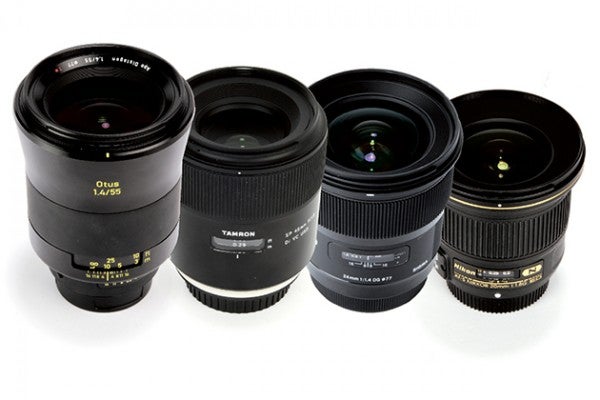The latest prime lenses don’t compromise on image quality, but there is a trade-off
Recently there’s been a spate of introductions of a kind of lens that might have been thought almost obsolete – the prime lens. At the vanguard of the trend was Sigma, with its ‘Art’ (or A) series of lenses, available for full-frame use at 24mm, 35mm and 50mm, and all with an aperture of f/1.4. Nikon has recently extended its f/1.8 series of prime lenses, which now includes focal lengths of 20mm, 24mm, 28mm, 35mm, 50mm and 85mm. In the round of summer announcements, Tamron also launched two new f/1.8 primes – a 35mm and 45mm, both with optical stabilisation.
People select prime lenses over the more ubiquitous zoom lenses for one of three reasons. The first is lens speed. The slowest of these lenses is f/1.8 and there are no zoom lenses for full-frame available at that aperture (although the ever-innovative Sigma runs it close with the recently announced 24-35mm f/2 DG HSM | A lens). The wider aperture is not only valuable for low-light photography, but it also gives users the ability to control depth of field and allows you to pick out the main subject.
The second reason is one of image quality. Although the quality available from the latest zoom lenses is excellent, that from primes generally has the edge. This is not simply in terms of resolution, but also in two other important respects. Zoom lenses typically introduce quite a lot of distortion. This is sometimes simple barrel or pincushion distortion, but often it’s the more complex, obtrusive and harder-to-correct ‘moustache’ types – the consequence of having several interacting corrections that operate at different focal lengths. In addition, with fewer glass-to-air surfaces, primes will often have a different rendering quality, with higher micro-contrast.
The third reason relates to size and weight. With optical formulae involving fewer elements, a prime is typically smaller and lighter than a zoom. Moreover, a zoom needs to be sized to maintain its rated f-number at its longest focal length. As a result, its back end will be at least as large as a prime with that focal length. At the same time, if it is to maintain a vignette-free angle of view for its shortest focal length, its front end has to be oversized, too.
A common factor in the design of all these new primes is that this third advantage has been more or less dropped. They are all very large in comparison to older prime lenses of similar focal length and aperture. The reason for this is that they are all no-compromise designs in terms of the image quality available at their maximum apertures. This is a trend started by Zeiss, with its superlative Otus 50mm f/1.4 T* lens, which was nearly double the size of any previous lens with those parameters, but delivered exceptional resolution when used wide open. The fact that so many other lens manufacturers have followed the same design philosophy represents a belief that DSLR owners value lens speed and resolution more than compactness and low weight.
Bob Newman is currently Professor of Computer Science at the University of Wolverhampton. He has been working with the design and development of high-technology equipment for 35 years and two of his products have won innovation awards. Bob is also a camera nut and a keen amateur photographer





